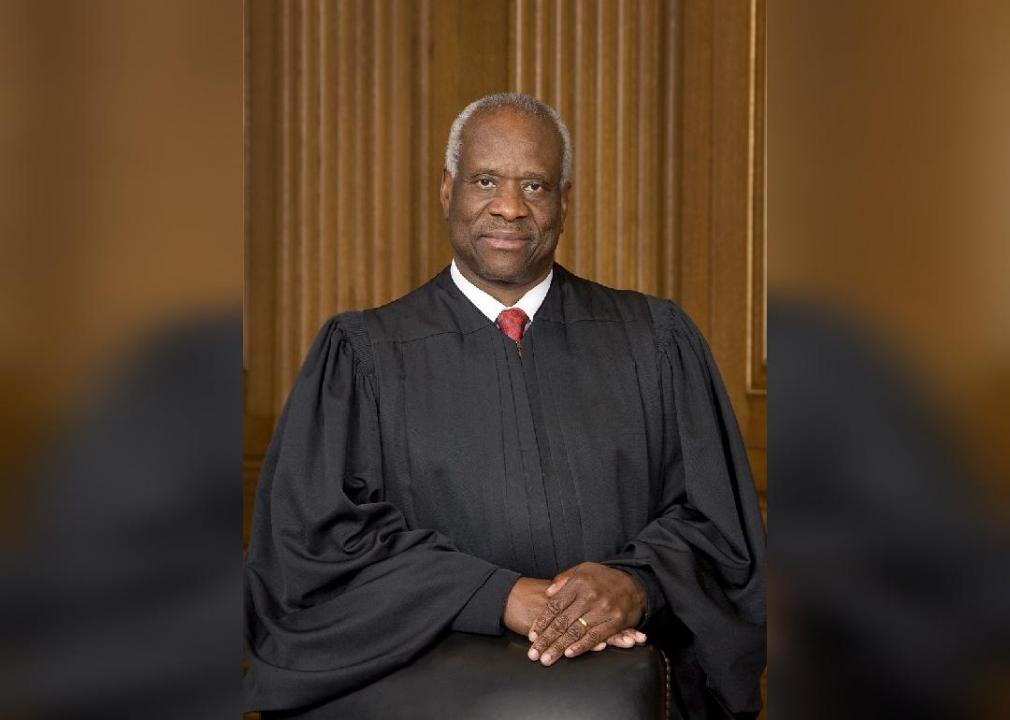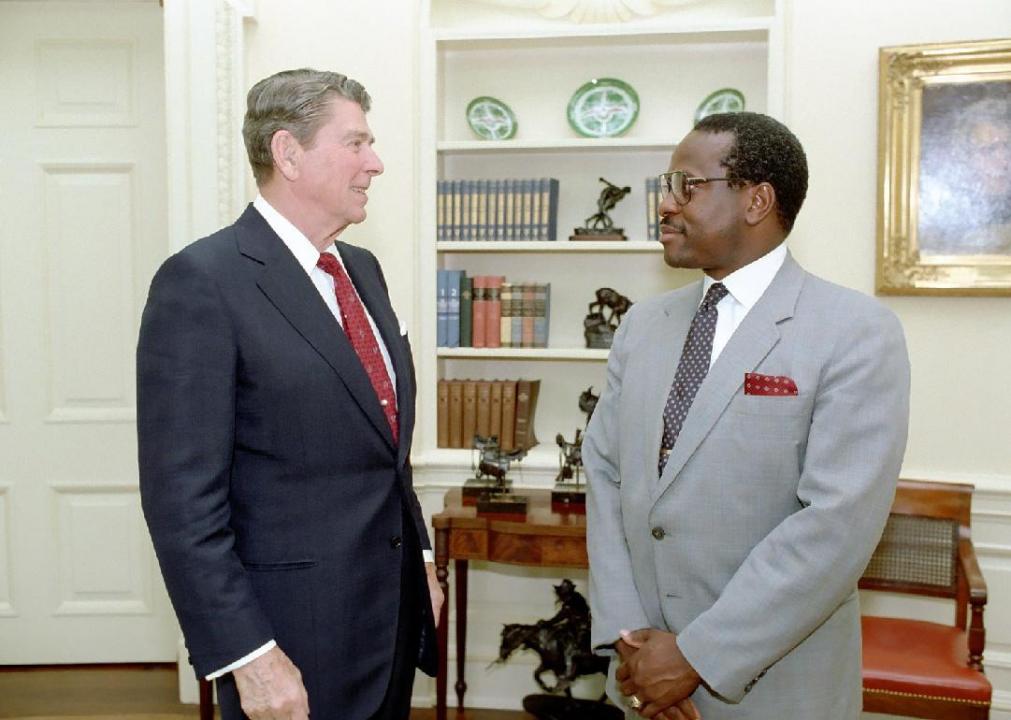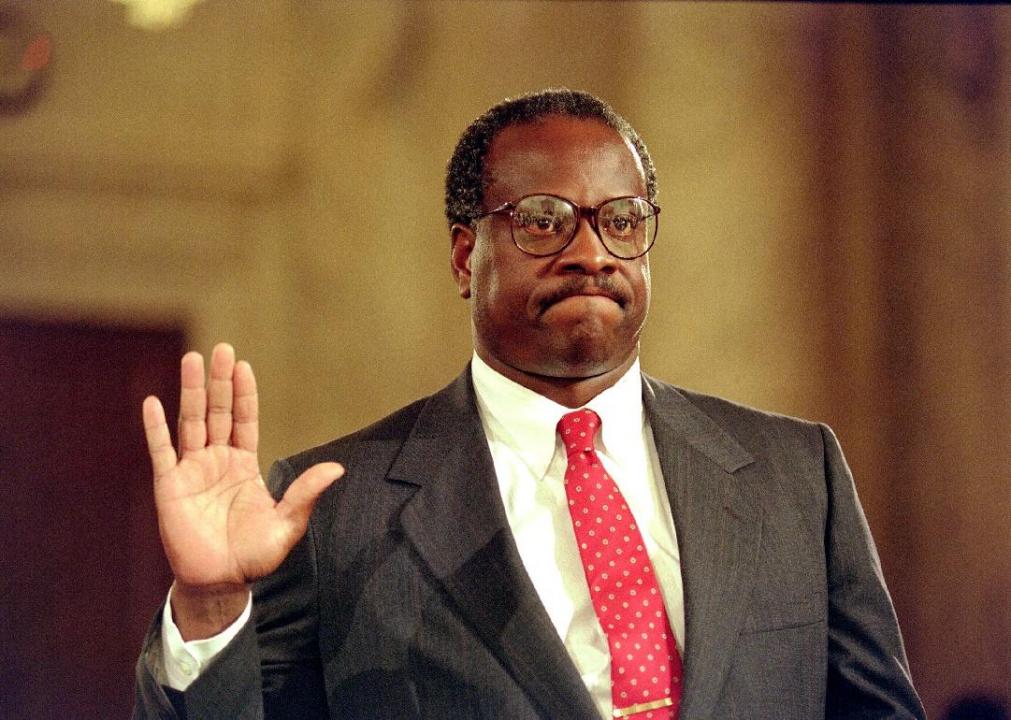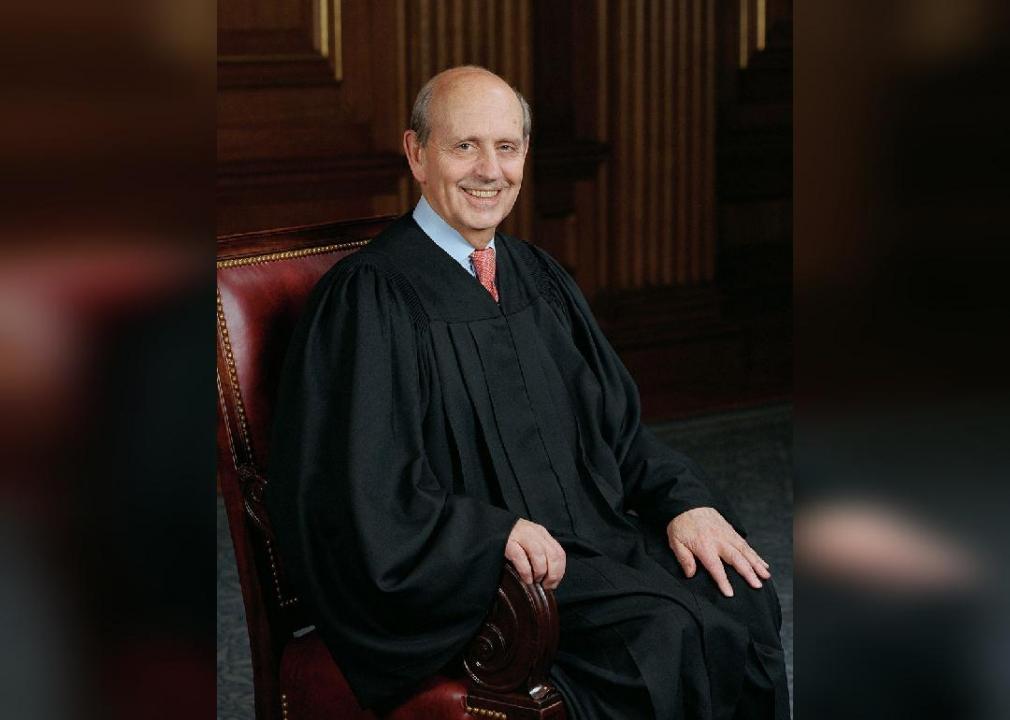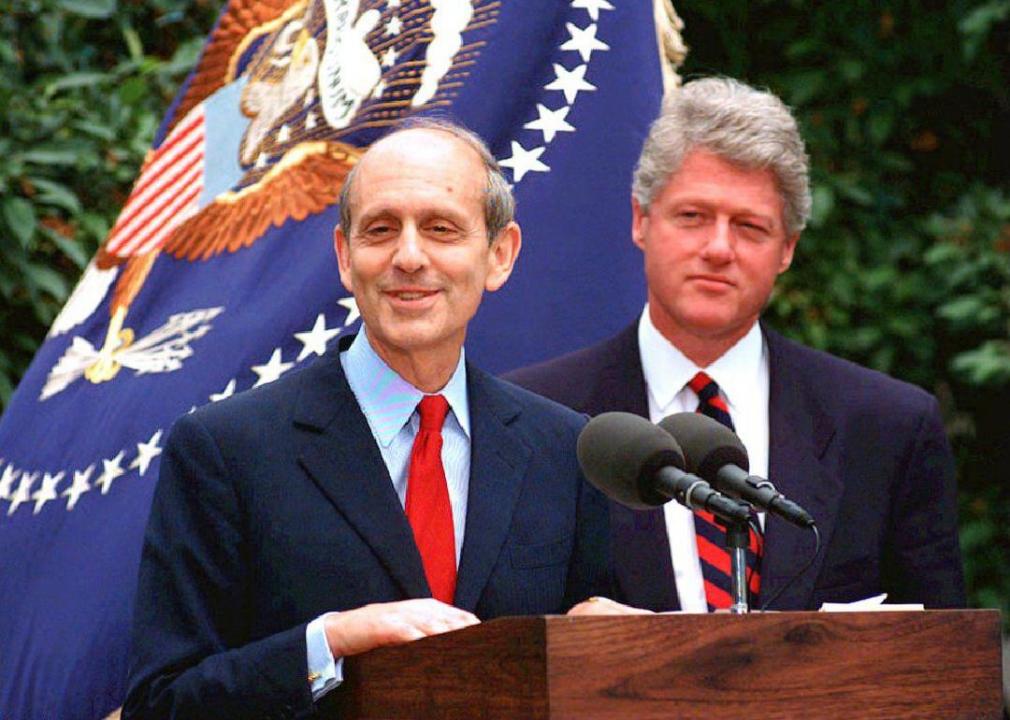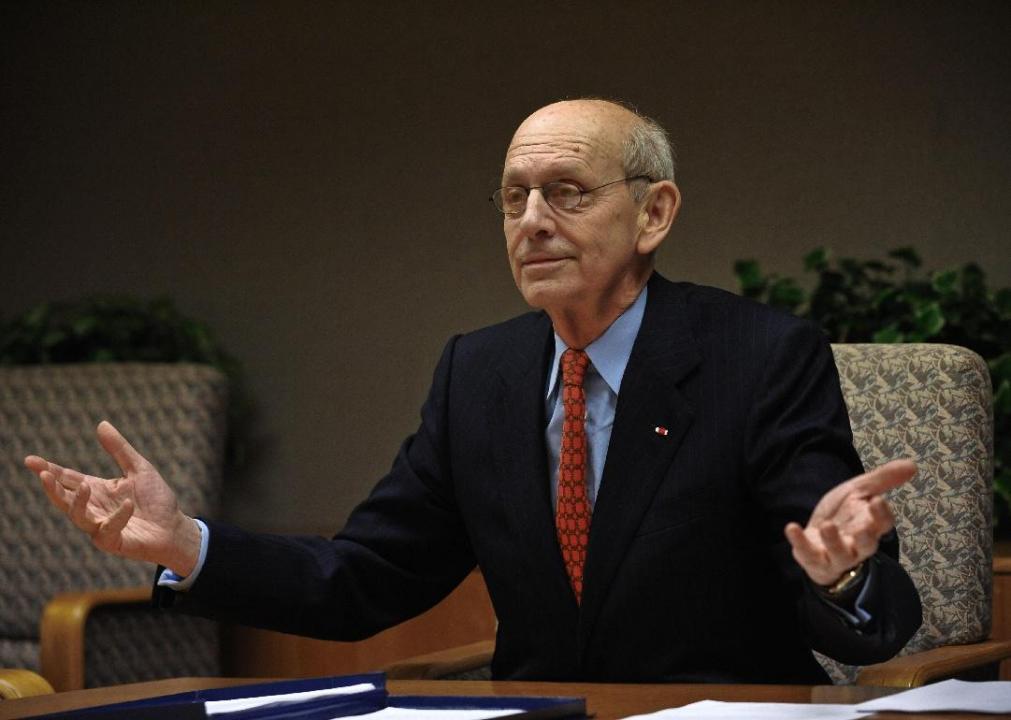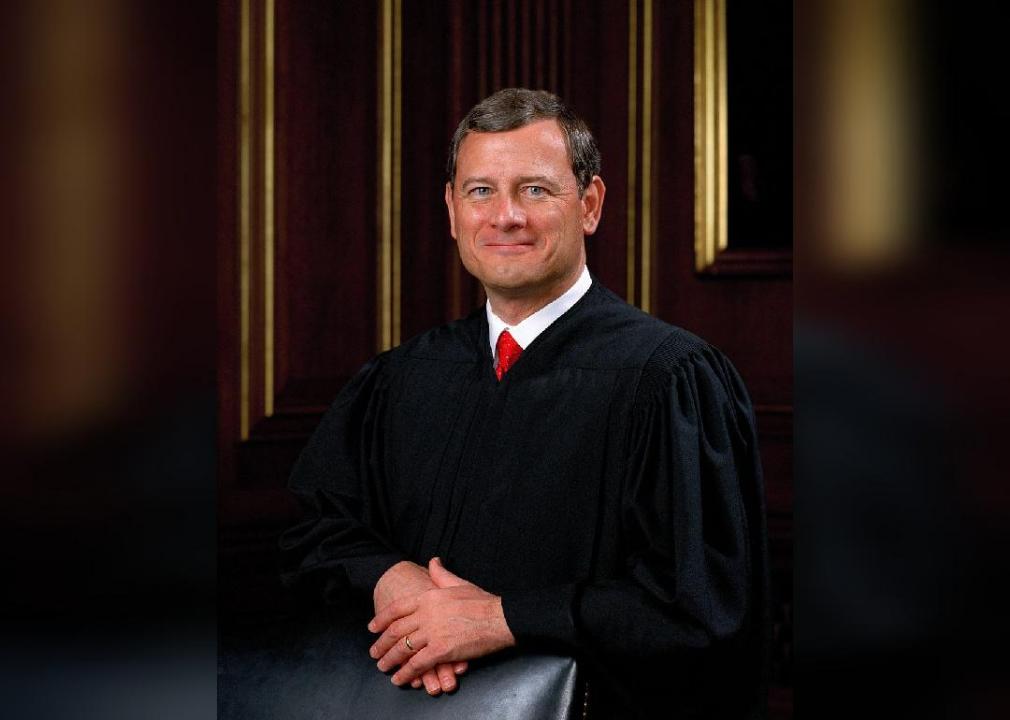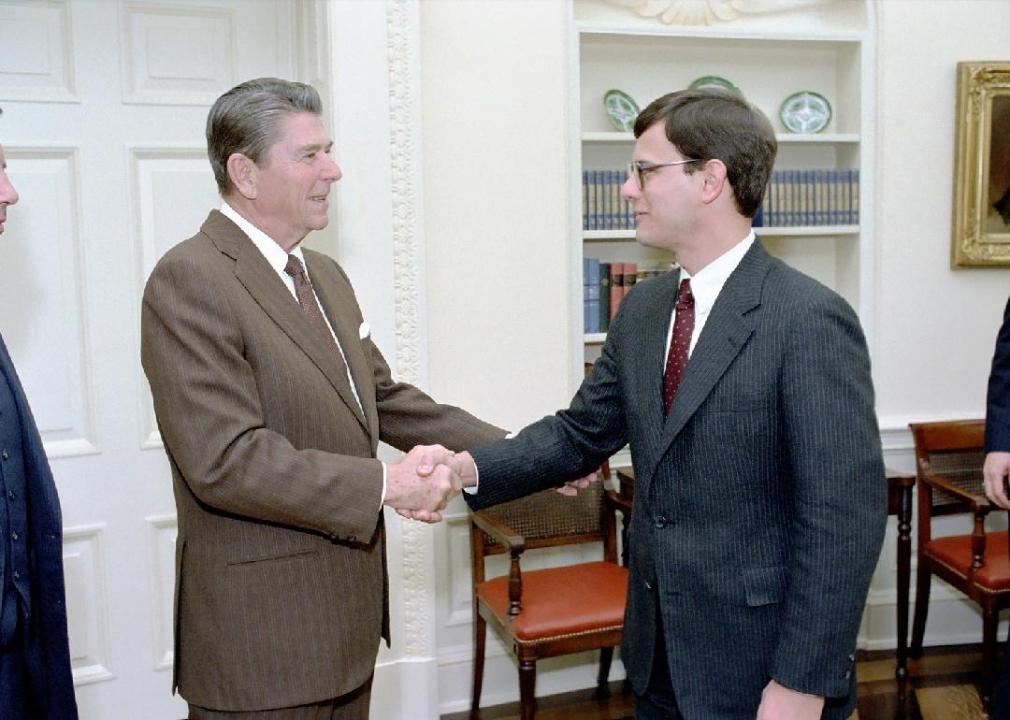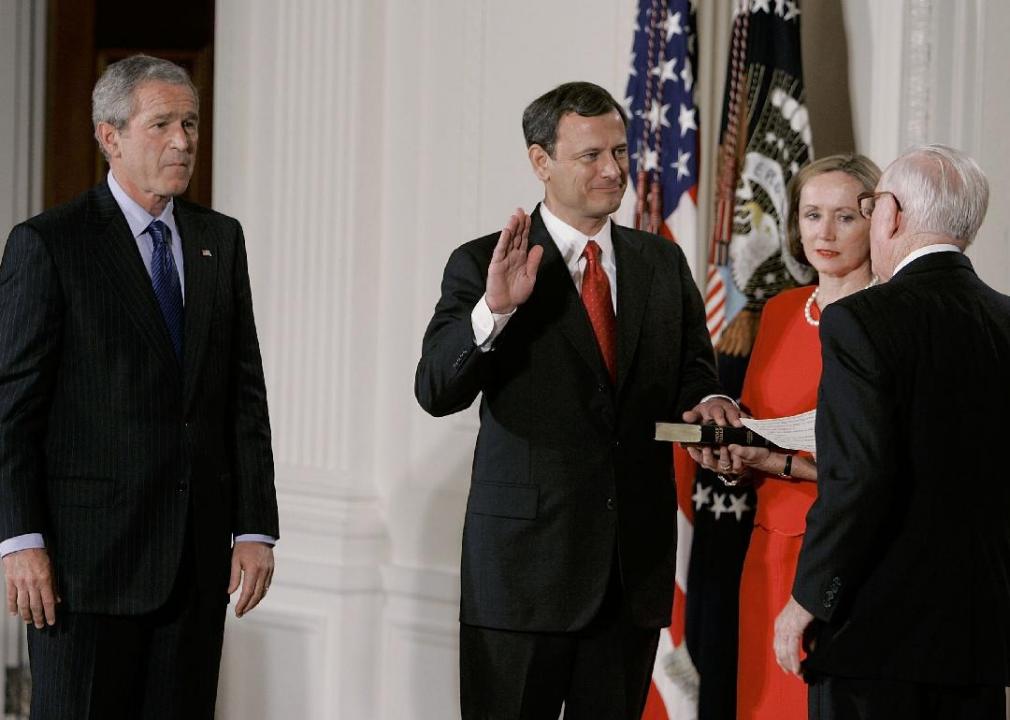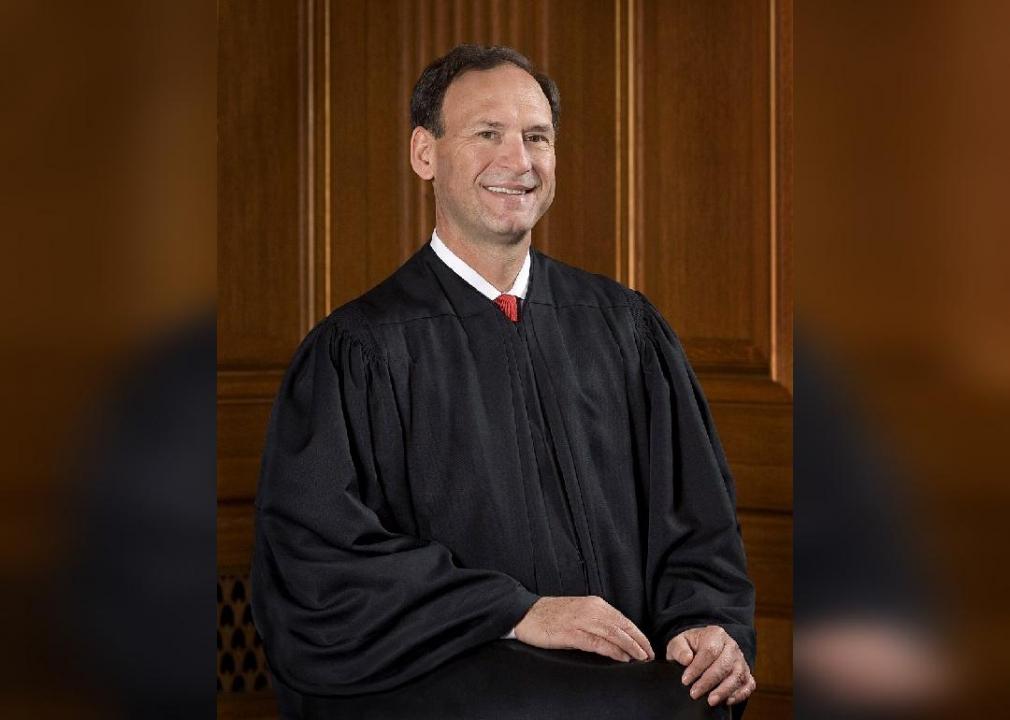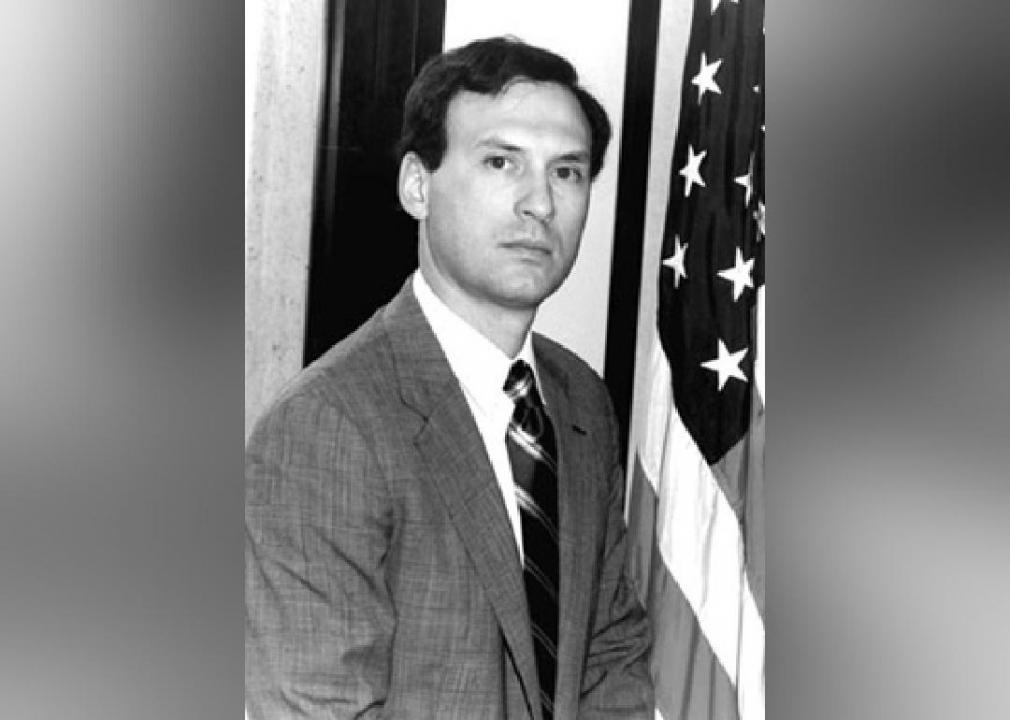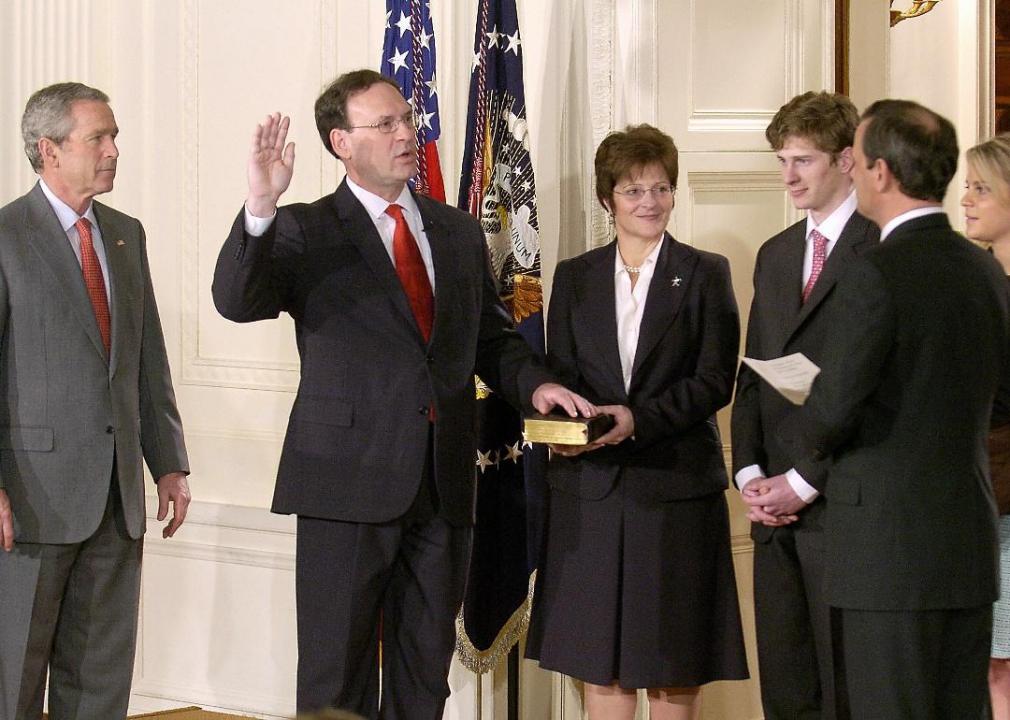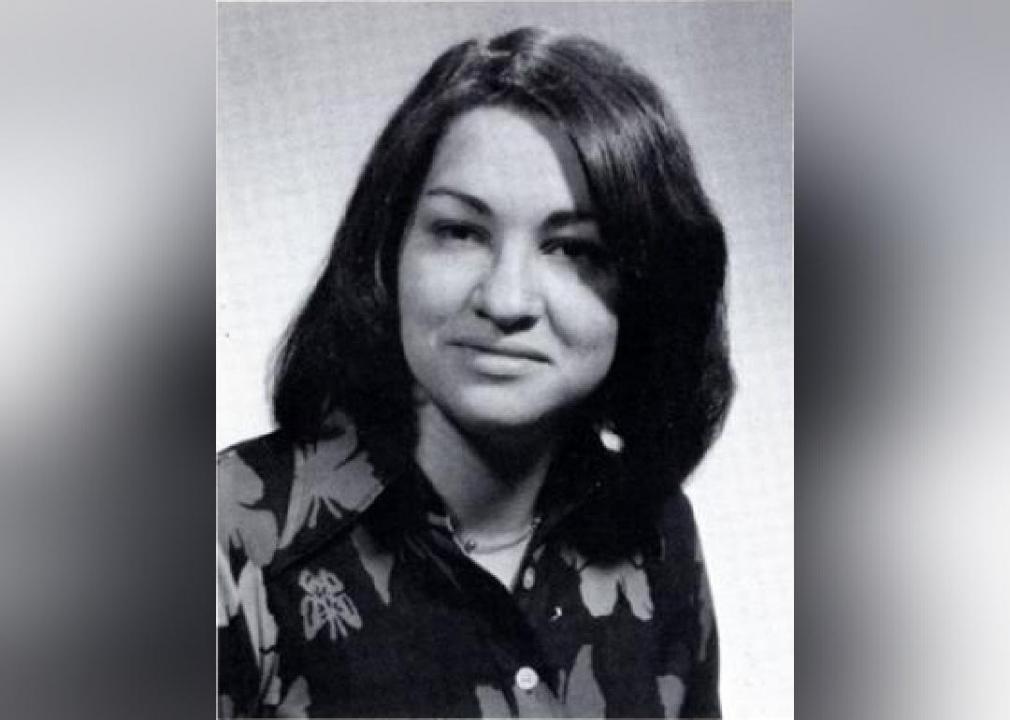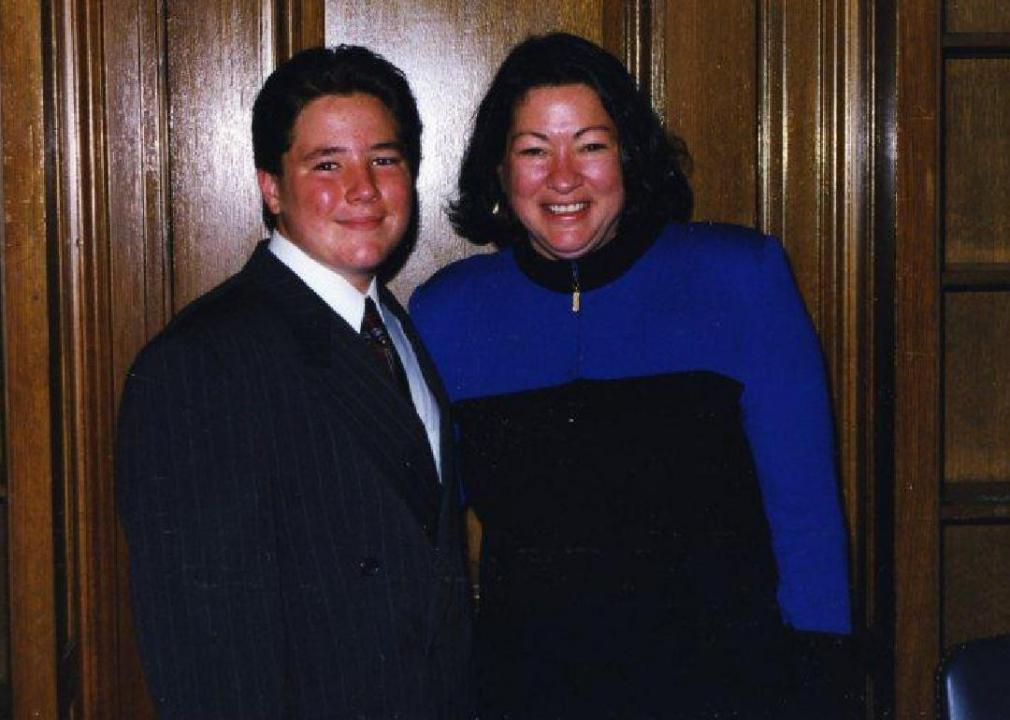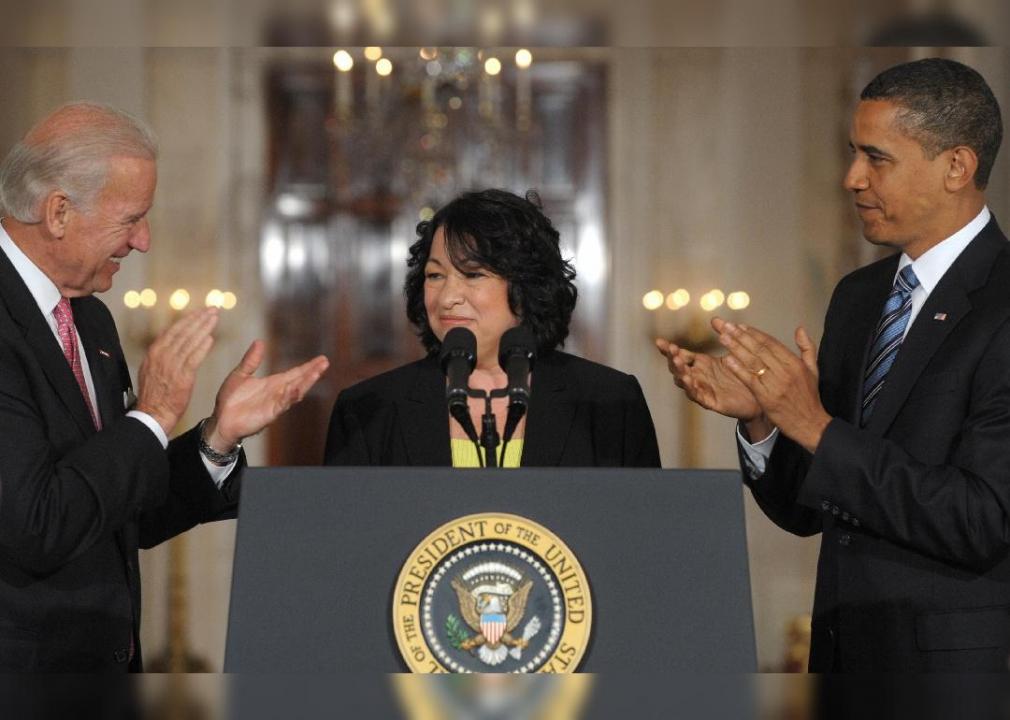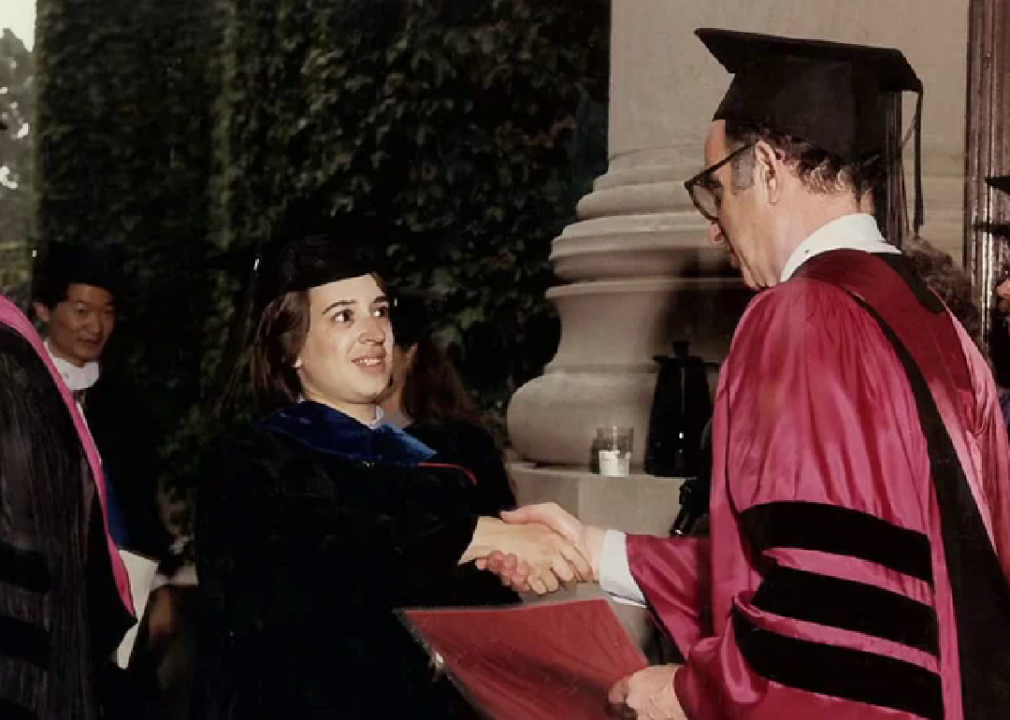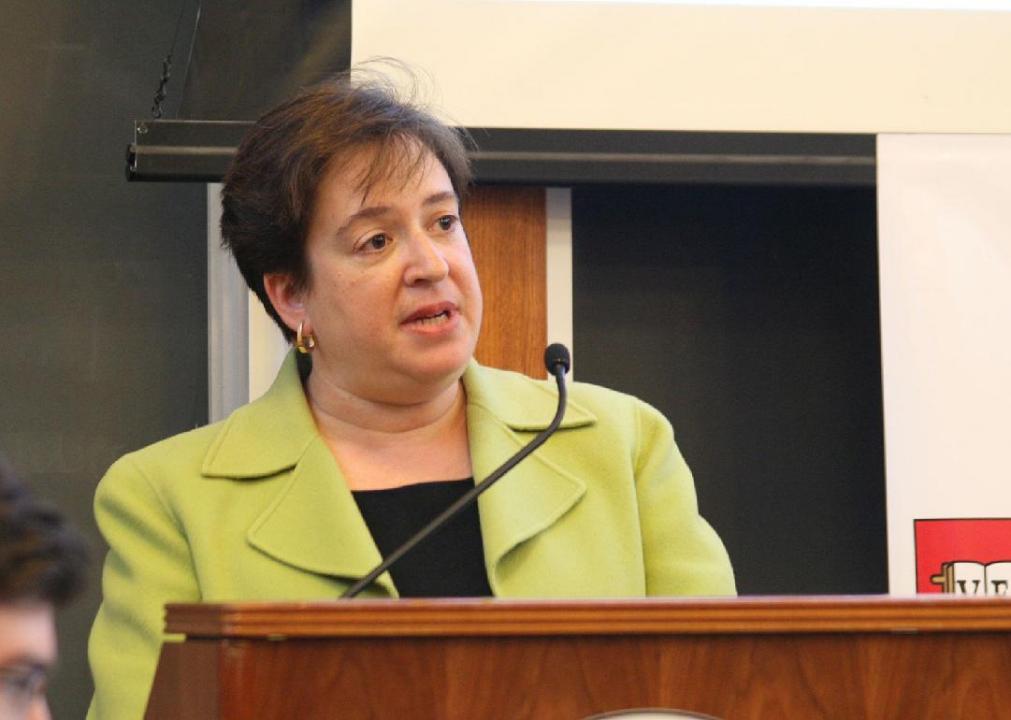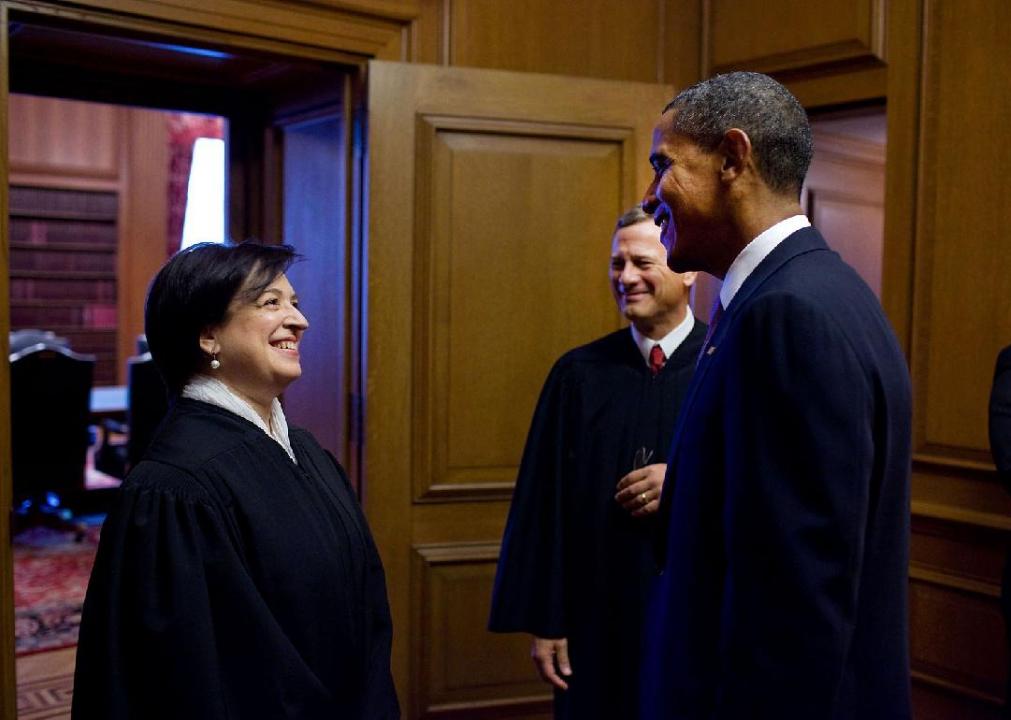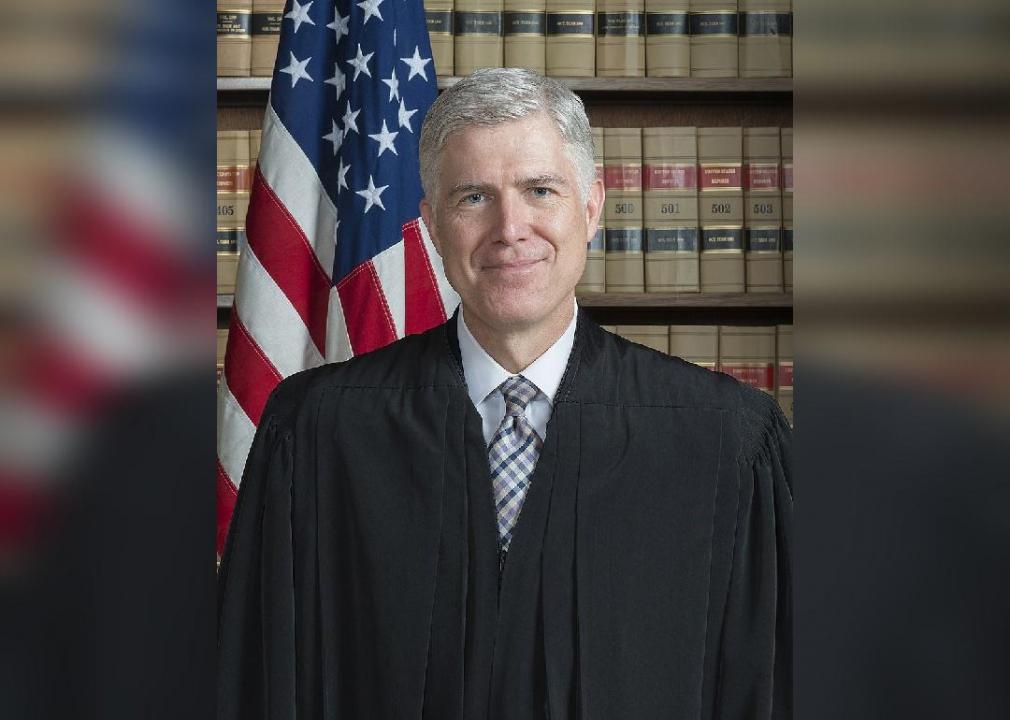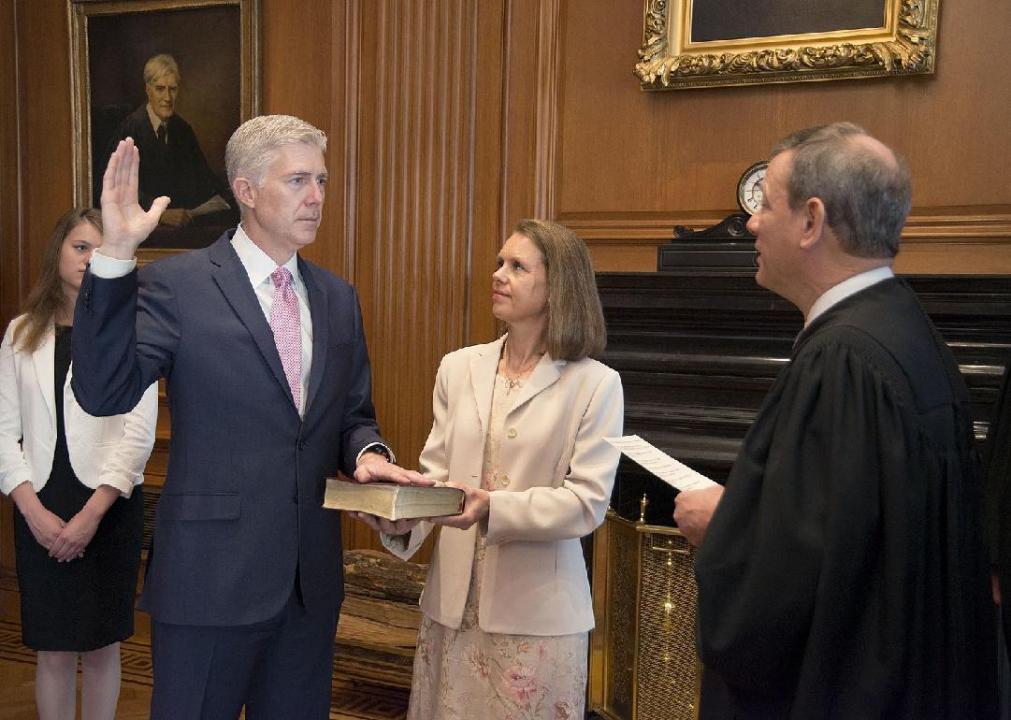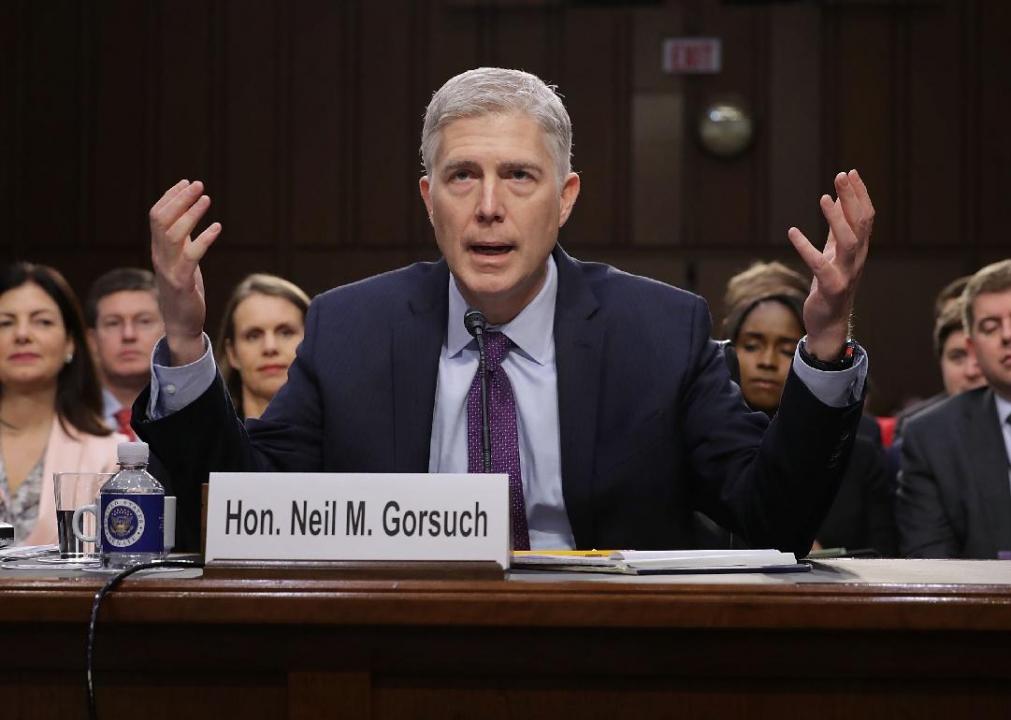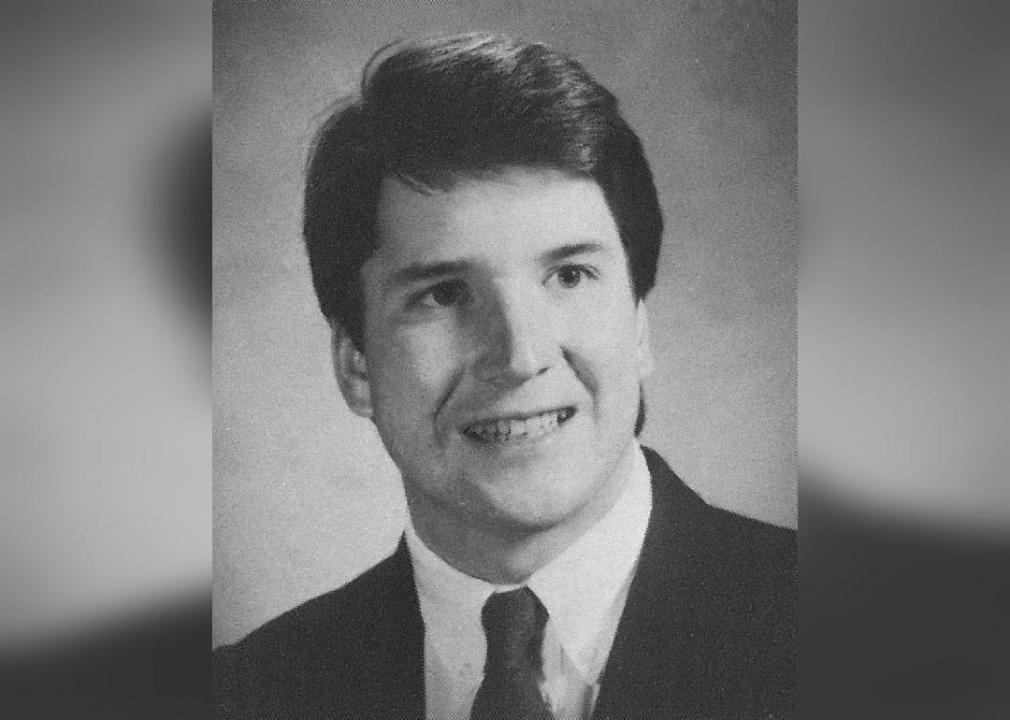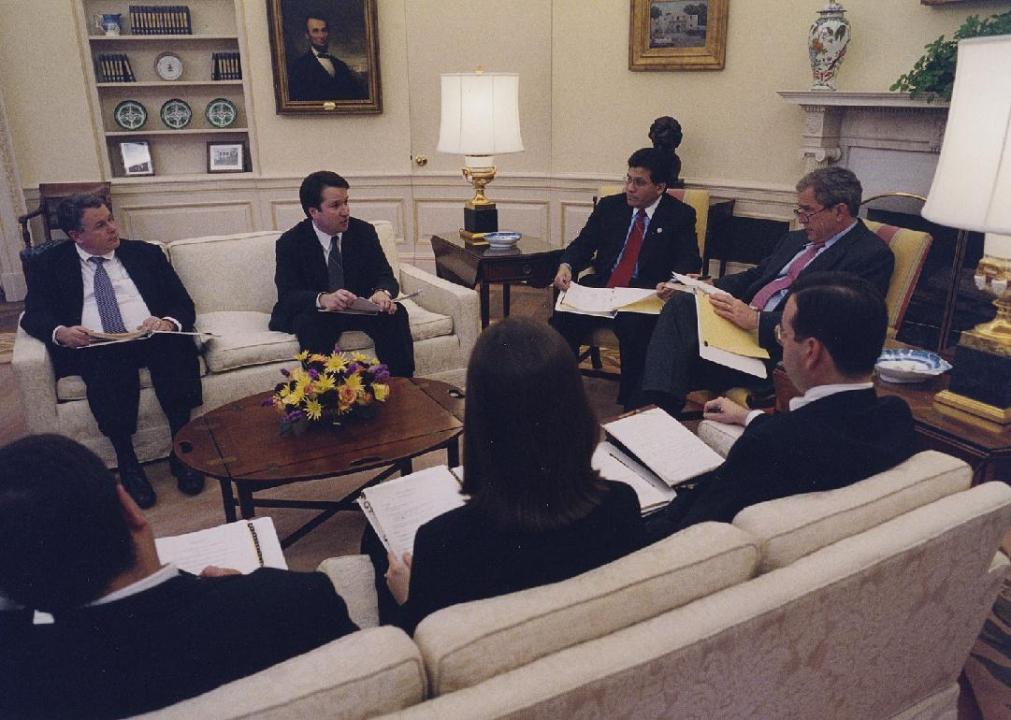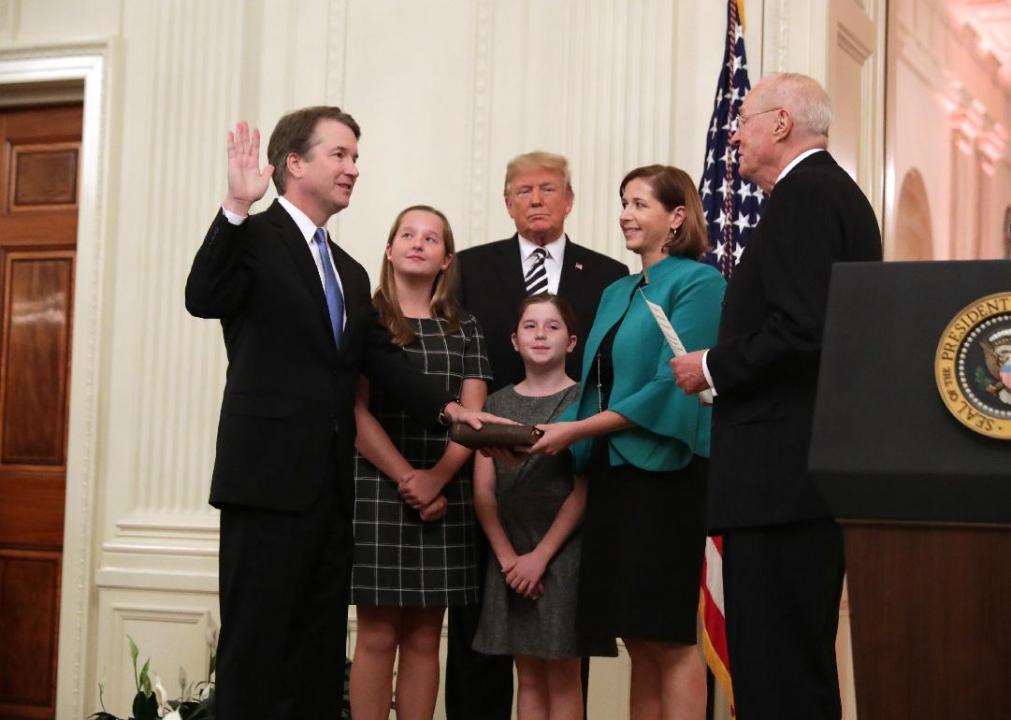Former jobs of every Supreme Court justice
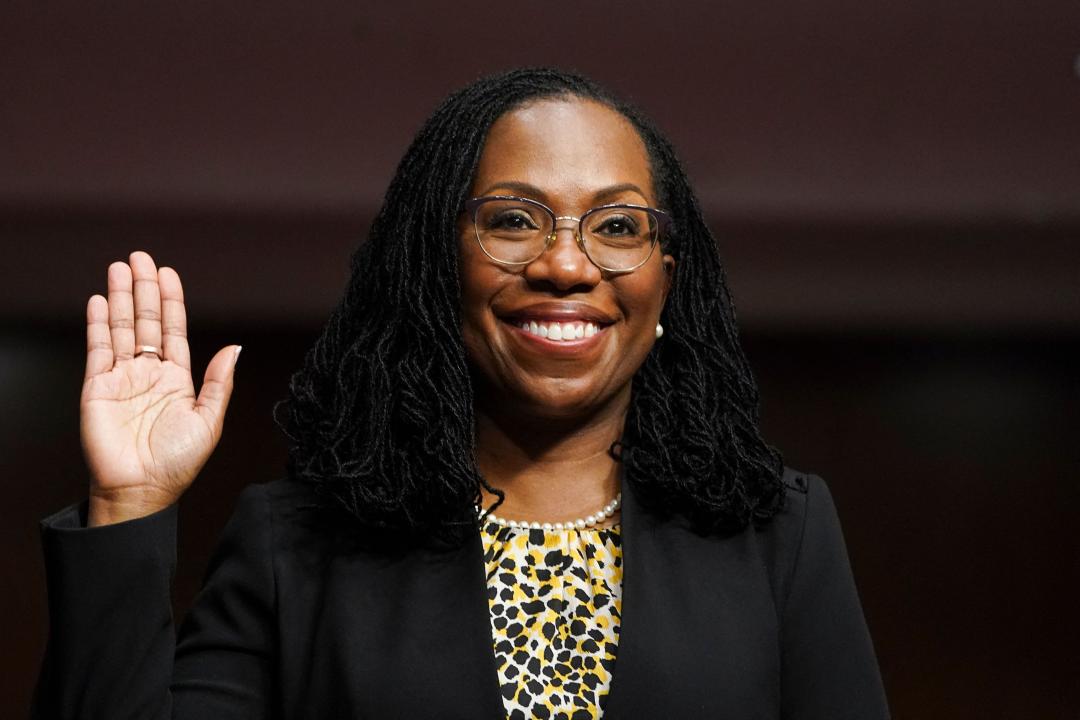
KEVIN LAMARQUE/POOL // AFP via Getty Images
Former jobs of every Supreme Court justice
Since its establishment in 1789 by the U.S. Constitution, the U.S. Supreme Court has seen 17 chief justices, and 116 justices in total. Many landmark cases have passed through the Supreme Court of the U.S. (SCOTUS), having set precedents and changed the fabric of society.
Stacker compiled an account of the educational and professional history of each current Supreme Court justice, including Ketanji Brown Jackson, the newest member. Each justice’s background is divided into three sections: education, early career life, and professional life in the years leading up to their tenures on the Supreme Court.
The SCOTUS has been predominantly white and male since its founding. In fact, all but eight of the court’s 116 justices have been white men. Sandra Day O’Connor was the first woman to be confirmed to the Supreme Court in 1981; Thurgood Marshall was the first person of color to be appointed to the court in 1967; and Jackson became the first Black woman confirmed to the highest court in the nation on April 7, 2022.
The current Supreme Court justices took different paths to achieve their current esteemed positions. Ruth Bader Ginsburg, who died in 2020, was appointed in 1993 and faced many challenges on her path to becoming a SCOTUS justice. She encountered sexism in her attempt to get clerkships as a female law graduate in the 1950s and received lower pay than her male colleagues when she taught at Rutgers Law School in the 1960s.
When Clarence Thomas was applying for jobs as a new law graduate, he found that some law firms did not take his Yale juris doctorate degree seriously because the university had been trying to fulfill quotas of Black students at the time. Sonia Sotomayor spoke out in support of Hispanic rights as a student and as a judge, and experienced roadblocks when she was nominated to the U.S. Court of Appeals due to Republican beliefs that President Bill Clinton was trying to facilitate her nomination as the first Hispanic person in the Supreme Court. She was confirmed to the SCOTUS in 2009.
You may also like: Every Supreme Court justice of the past 50 years
![]()
Steve Petteway // Wikimedia Commons
Clarence Thomas: Education
Clarence Thomas earned a B.A. in English from the College of the Holy Cross in Massachusetts, where he helped create the Black Student Union. He obtained a J.D. from Yale in 1974, though law firms did not take his degree seriously when he was applying for jobs. He cited that law firms assumed that he got into the program because of the law school’s increase in its quota of Black students, and thus put less weight on LSAT scores and grades for those students.
Ronald Reagan Presidential Library // Wikimedia Commons
Clarence Thomas: Early career life
After his admittance to the Missouri Bar in 1974, Thomas worked as assistant attorney general of Missouri under state Attorney General John Danforth, and was the only African American on Danforth’s staff. After changing roles when Danforth was elected to the Senate in 1976, Thomas returned to work for him in the late ‘70s as a legislative assistant focusing on energy issues for the Senate Commerce Committee. Danforth would play an important role in endorsing Thomas as a Supreme Court justice.
In the early 1980s, Thomas took on the role of assistant secretary of education for the Office for Civil Rights in the Department of Education, and then as chairman of the U.S. Equal Employment Opportunity Commission from 1982 to 1990. In the latter role, Thomas sought cases of individual discrimination rather than adhere to the commission’s habitual method of filing class-action discrimination lawsuits. He opined that Black leaders were all talk and no action in terms of the Reagan administration’s shortcomings, and that they should have collaborated with the federal government to improve issues such as illiteracy and teen pregnancy.
J. DAVID AKE // Getty Images
Clarence Thomas: Before the Supreme Court
President George H. W. Bush nominated Thomas to the U.S. Court of Appeals for the D.C. Circuit in 1989, despite Thomas having said he did not want to be a judge. Nevertheless, other African Americans working in government backed him, including Secretary of Transportation William Coleman. In 1991, shortly after Thurgood Marshall declared that he’d be retiring, President Bush nominated Thomas to replace him on the Supreme Court.
Some civil rights and feminist organizations were against Thomas’ appointment due in part to his condemnation of affirmative action, as well as apprehensions that he might have been against Roe v. Wade. After Thomas’ confirmation hearings ended, but before the Senate officially approved his nomination, Anita Hill accused Thomas of verbal sexual harassment in a leaked FBI interview. In reopened hearings, Thomas denied the allegations and maintained his right to privacy. The Judiciary Committee voted to send Thomas’ nomination to the Senate, and after further investigation with no substantial evidence of sexual harassment, the Senate confirmed Thomas to the Supreme Court in October 1991.
You may also like: The 51 women who have won the Nobel Prize
Steve Petteway // Wikimedia Commons
Stephen Breyer: Education
Before Stephen Breyer graduated from Harvard Law School with an LL.B. (a bachelor of laws degree) in 1964, he earned a bachelor of arts in philosophy from Stanford in ‘59, and studied philosophy, politics, and economics as a Marshall Scholar at Oxford’s Magdalen College. While at Harvard, Breyer worked as an editor for the Harvard Law Review and graduated with honors.
ROBERT GIROUX // Getty Images
Stephen Breyer: Early career life
In 1964, Breyer clerked for Associate Justice Arthur Goldberg and later worked in the Antitrust Division of the U.S. Department of Justice as a special assistant to the assistant attorney general. In 1967 he began teaching at his alma mater, Harvard Law School, and later worked as an assistant prosecutor on the Watergate Special Prosecution Force in 1973.
He served as special counsel, and later as chief counsel, to the Administrative Practices Subcommittee of the Senate Judiciary Committee. He collaborated with the committee’s chairman Edward M. Kennedy to execute the Airline Deregulation Act.
NICHOLAS KAMM // Getty Images
Stephen Breyer: Before the Supreme Court
In 1980, President Jimmy Carter appointed Breyer to the U.S. Court of Appeals for the First Circuit, where he later served as chief judge from 1990 to 1994. As a member of the U.S. Sentencing Commission from 1985 to 1989, Breyer played an instrumental part in reshaping criminal sentencing procedures on the federal level, as well as creating the Federal Sentencing Guidelines.
Following the retirement of Harry Blackmun, President Bill Clinton nominated Breyer to the position of associate justice of the Supreme Court in 1994. He was confirmed the same year. As a Supreme Court judge, Breyer maintains a pragmatic approach to law, and looks to “purpose and consequences” in interpreting laws. He has uniformly voted to support abortion rights and has largely deferred to Congress, hardly ever voting to reverse congressional legislation.
Steve Petteway // Wikimedia Commons
John Roberts: Education
Current Chief Justice John Roberts earned a bachelor’s degree from Harvard University in 1976 and stayed on to obtain his J.D. in ‘79. In his undergraduate degree, he wrote a thesis paper on early 20th-century British liberalism. In law school, he worked as managing editor of the Harvard Law Review and as a law clerk.
National Archives Catalog // Wikimedia Commons
John Roberts: Early career life
As a new law graduate, Roberts clerked for appellate Judge Henry Friendly and William Rehnquist, whom he succeeded on the Supreme Court. In the 1980s, Roberts served as special assistant to U.S. Attorney General William French Smith, and then as associate counsel to President Ronald Reagan. While working for the law firm Hogan & Hartson in the mid-1980s, Roberts carried out pro bono work for LGBTQ+ rights activists and prepped arguments for the 1996 case Romer v. Evans, which involved sexual orientation as related to state law.
In 1989, Roberts took on the role of principal deputy solicitor general under President George H. W. Bush. After three years as solicitor general, he returned to practicing law privately and taught law at Georgetown University. He was part of the team of lawyers that advised Gov. Jeb Bush during the 2000 presidential election recount in Florida.
Mark Wilson // Getty Images
John Roberts: Before the Supreme Court
In 2001, Roberts was nominated to serve on the U.S. Court of Appeals for the District of Columbia Circuit (D.C. Circuit) but was not confirmed until 2003 due to disagreements between the Bush administration and the majority Democratic Senate. As a Supreme Court judge, Roberts ruled over several significant cases, including Hamdan v. Rumsfeld, which was a question of the legal validity of military tribunals.
In 2005, President George W. Bush initially nominated Roberts to the Supreme Court to fill the shoes of Associate Justice Sandra Day O’Connor, who had retired. However, upon the death of William Rehnquist later that year, Bush renominated Roberts to the role of chief justice. Regarding his judicial philosophy, Roberts likened judges to baseball umpires, saying “it’s my job to call the balls and strikes and not to pitch or bat.”
Steve Petteway // Wikimedia Commons
Samuel A. Alito Jr.: Education
Samuel Alito graduated from Princeton’s Woodrow Wilson School of Public and International Affairs in 1972. He then received his law degree from Yale in 1975, where he was editor of the Yale Law Journal. While at Princeton, Alito chaired a 1971 student conference called “The Boundaries of Privacy in American Society,” which, among other things, called for a statute and a court to govern national security surveillance, elimination of discrimination against gay people in hiring processes, and the decriminalization of sodomy. The extent to which the conference agenda mirrors Alito’s personal convictions is unknown.
United States Courts // Wikimedia Commons
Samuel A. Alito Jr.: Early career life
After graduating from law school, Alito clerked under Judge Leonard Garth in the U.S. Court of Appeals for the Third Circuit. From the early to mid-1980s, he worked as Deputy Assistant to the U.S. Solicitor General Rex E. Lee, under whom he argued 12 cases for the federal government in the Supreme Court. From 1987 to 1990, Alito served as the U.S. Attorney for the District of New Jersey, appointed by Ronald Reagan. In this role, he successfully prosecuted the 1988 case of an FBI agent who was shot in the field and prosecuted a sympathizer of the Japanese Red Army who was found with homemade bombs in his car at a New Jersey Turnpik service center.
MIKE THEILER // Getty Images
Samuel A. Alito Jr.: Before the Supreme Court
From 1990 until his nomination to the Supreme Court, Alito worked as a judge in the U.S. Court of Appeals for the Third Circuit. Although broadly conservative in his judicial approach, he handled rulings on each case differently.
As the son of an Italian immigrant, Alito was understanding of the issues of people he found similar to himself, exemplified in the case of Fatin v. INS, in which an Iranian woman was seeking asylum. In 2005, President George W. Bush nominated Alito to replace Sandra Day O’Connor on the Supreme Court, and he was confirmed the following year. Alito still rules based on the case at hand, though he frequently veers on the side of conservatism.
WhiteHouse.gov // Wikimedia Commons
Sonia Sotomayor: Education
The first Hispanic and third woman to serve on the Supreme Court, Sonia Sotomayor earned an undergraduate degree from Princeton, where she co-chaired the Puerto Rican activist group Acción Puertorriqueña. As part of this group, she accused the Princeton administration of bias against Puerto Ricans in their hiring process. In the same vein of Puerto Rican rights, she also wrote a senior thesis on Puerto Rican journalist Luis Muñoz Marín. In pursuing her J.D. from Yale, she was editor of the Yale Law Review and published a notable article on how statehood would impact Puerto Rico’s mineral rights.
WhiteHouse.gov // Wikimedia Commons
Sonia Sotomayor: Early career life
Freshly out of law school in 1979, Sotomayor landed a position as an assistant district attorney under New York District Attorney Robert Morgenthau. In the wake of rampant New York crime rates, she dealt with substantial caseloads including shoplifting, police brutality, and murder. In terms of serious felonies, Sotomayor said, “No matter how liberal I am, I am still outraged by crimes of violence,” especially for violent crime within the Hispanic community.
In her role as a judge on the U.S. District Court for the Southern District of New York, she took anti-government stances in numerous cases and was known for administering heavy sentences in criminal cases. In the notable case Silverman v. Major League Baseball Player Relations Committee, Inc., Sotomayor’s preliminary injunction against Major League Baseball barred it from executing a new collective bargaining agreement, thus putting a stop to the months-long 1994 baseball strike.
SAUL LOEB // Getty Images
Sonia Sotomayor: Before the Supreme Court
In 1997, President Bill Clinton nominated Sotomayor to a seat on the U.S. Court of Appeals for the Second Circuit. However, Senate Republicans delayed her confirmation process because they believed that Clinton had an ulterior motive of positioning her for a Supreme Court nomination as the first Hispanic judge. Sotomayor was confirmed to the Court of Appeals in 1998.
As a judge, she was described as a centrist by the ABA Journal. As a member of the Second Circuit Task Force on Gender, Racial and Ethnic Fairness in the Courts, Sotomayor presented the annual Judge Mario G. Olmos Memorial Lecture at the University of California, Berkeley in 2001, in which she talked in part about the history of women and minorities who rose to become federal judges.
In the 2002 abortion case Center for Reproductive Law and Policy v. Bush, Sotomayor defended the Bush administration’s enactment of the Mexico City Policy, detailing that the U.S. would refrain from subsidizing nongovernmental organizations that perform or advocate for abortions in other countries. President Barack Obama nominated Sotomayor to the Supreme Court in 2009, and she was confirmed the same year.
Unknown // Wikimedia Commons
Elena Kagan: Education
Elena Kagan graduated from Princeton in 1981, received an M.Phil. from Oxford’s Worcester College as a Daniel M. Sachs Graduating Fellow in ‘83, and earned her J.D. from Harvard Law School in ‘86, graduating with honors. At Princeton, Kagan was the editorial chair of The Daily Princetonian, and in collaboration with several other students, wrote a Declaration of the Campaign for a Democratic University, which detailed a need to retool university governance on a core level.
At Worcester College, Kagan wrote a thesis on “The Development and Erosion of the American Exclusionary Rule: A Study in Judicial Method.” At Harvard, she worked as supervising editor of the Harvard Law Review. She was described as being good with people and gained the respect of everyone despite divisive political views on campus.
Doc Searls // Wikimedia Commons
Elena Kagan: Early career life
In 1987 Kagan clerked for Judge Abner J. Mikva on the U.S. Court of Appeals for the D.C. Circuit, and a year later clerked for Justice Thurgood Marshall on the U.S. Supreme Court. As a lawyer for the D.C. firm Williams & Connolly, Kagan worked on five lawsuits rooted in issues of the First Amendment and media law. In the early 1990s, she took a job as an assistant professor at the University of Chicago Law School, where she published an influential law review article in which she argued that the SCOTUS should investigate governmental motives when dealing with cases concerning the First Amendment. Two years after she got her assistant professorship, Joe Biden appointed her as special counsel for the Senate Judiciary Committee, where she played a part in the confirmation hearings of Ruth Bader Ginsburg.
Official White House Photo by Pete Souza // Wikimedia Commons
Elena Kagan: Before the Supreme Court
Prior to her nomination to the Supreme Court, Kagan worked as associate White House Counsel for President Bill Clinton from 1995 to 1996, as deputy assistant to the president for domestic policy, and as deputy director of the Domestic Policy Council. In the latter role, Kagan co-wrote a memo asking that Clinton back a ban on late-term abortions.
After returning to academia for a decade, Kagan was nominated to the position of solicitor general by Barack Obama, and became the first woman in the role. Though considered to be part of the liberal wing of the SCOTUS, Kagan veers on the moderate side. Obama nominated her to the Supreme Court in 2010, and she was confirmed the same year.
Franz Jantzen // Wikimedia Commons
Neil Gorsuch: Education
Neil Gorsuch received his B.A. in political science from Columbia in 1988, followed by a J.D. from Harvard in 1991, and finally, a Ph.D. in law from Oxford in 2004. While at Columbia, he wrote for the Columbia Daily Spectator and co-founded an alternative student newspaper called The Fed, as well as the magazine The Morningside Review. At Harvard, Gorsuch worked as an editor for the Harvard Journal of Law and Public Policy and was described as conservative amidst a student population of “ardent liberals,” according to the Boston Globe’s Michael Levenson.
Supreme Court // Wikimedia Commons
Neil Gorsuch: Early career life
After completing a judicial clerkship for SCOTUS Justices Byron White and Anthony Kennedy, Gorsuch practiced commercial law at Kellogg Huber, where he worked on securities fraud, antitrust, and contracts cases. In the case of Dura Pharmaceuticals, Inc. v Broudo, Gorsuch communicated that he believed that securities fraud litigation is burdensome to the economy.
He also worked as principal deputy to Associate Attorney General Robert McCallum at the U.S. Department of Justice, where he worked on civil litigation cases, as well as terror litigation related to President Bush’s War on Terror. Generally, Gorsuch is a constitutional originalist, which is to say that he believes that the constitution should be deciphered as it was originally written.
Chip Somodevilla // Getty Images
Neil Gorsuch: Before the Supreme Court
Before his confirmation as a Supreme Court Justice, Gorsuch spent 11 years on the U.S. Court of Appeals for the Tenth Circuit. In this role, in the case of Hobby Lobby Stores v. Sebelius, Gorsuch wrote a concurrence—or an attempt to prove both guilty action and guilty mind—when the en banc circuit determined that the Affordable Care Act law requiring employers to provide their employees with health insurance that partially covers contraception violated the Religious Freedom Restoration Act.
Politically, Gorsuch supports a broad interpretation of freedom of religion. David Savage of the Los Angeles Times described him as “a libertarian who is quick to oppose unchecked government power.” President Donald Trump nominated Gorsuch to the Supreme Court in February 2017, and while the Senate Judiciary Committee approved the nomination, Democrats filibustered until Republicans broke it with a simple majority vote and confirmed Gorsuch to the SCOTUS.
WhiteHouse.gov // Wikimedia Commons
Brett Kavanaugh: Education
The most recently confirmed Supreme Court justice received both his B.A. and J.D. from Yale, the latter in 1990. During his time at Yale Law School, Kavanaugh was an editor for the Yale Law Journal. He reportedly said during his law school confirmation hearing testimony, “I got into Yale Law School. That’s the number-one law school in the country. I had no connections there. I got there by busting my tail in college.”
WhiteHouse.gov // Wikimedia Commons
Brett Kavanaugh: Early career life
In his early years in law, Kavanaugh worked as a clerk for judges in the U.S. Court of Appeals in the Third and Ninth Circuits. In the early 1990s, he completed a year-long fellowship with U.S. solicitor general at the time, Ken Starr, with whom he returned to work years later as an associate counselor in the Office of the Independent Counsel. In this role, Kavanaugh helmed the writing of the 1998 Starr Report to Congress, which detailed the scandal involving Bill Clinton and Monica Lewinsky.
In late 2000, Kavanaugh became part of George W. Bush’s legal team that strove to stop the recount of Florida ballots in the controversial 2000 presidential election between Bush and Al Gore. From 2003 to 06, he worked as assistant to President George W. Bush and White House Staff Secretary.
Chip Somodevilla // Getty Images
Brett Kavanaugh: Before the Supreme Court
In 2003, President Bush nominated Kavanaugh to the U.S. Court of Appeals for the District of Columbia Circuit, but his confirmation was delayed for three years because Senatorial Democrats believed him to be too biased. Kavanaugh asserted his conservative views on a host of important issues, including abortion and employment discrimination, throughout his 12 years as a judge on the appeals court.
Following President Trump’s nomination of Kavanaugh to the Supreme Court in July 2018, Christine Blasey Ford publicly stated that Kavanaugh had sexually molested her when they were in high school. During Senate Judiciary Committee hearings in September 2018, Kavanaugh vehemently denied the allegations. After an FBI investigation yielded no substantial evidence to validate Ford’s claim, the Senate confirmed Kavanaugh in a 50-48 vote on Oct. 6, 2018.
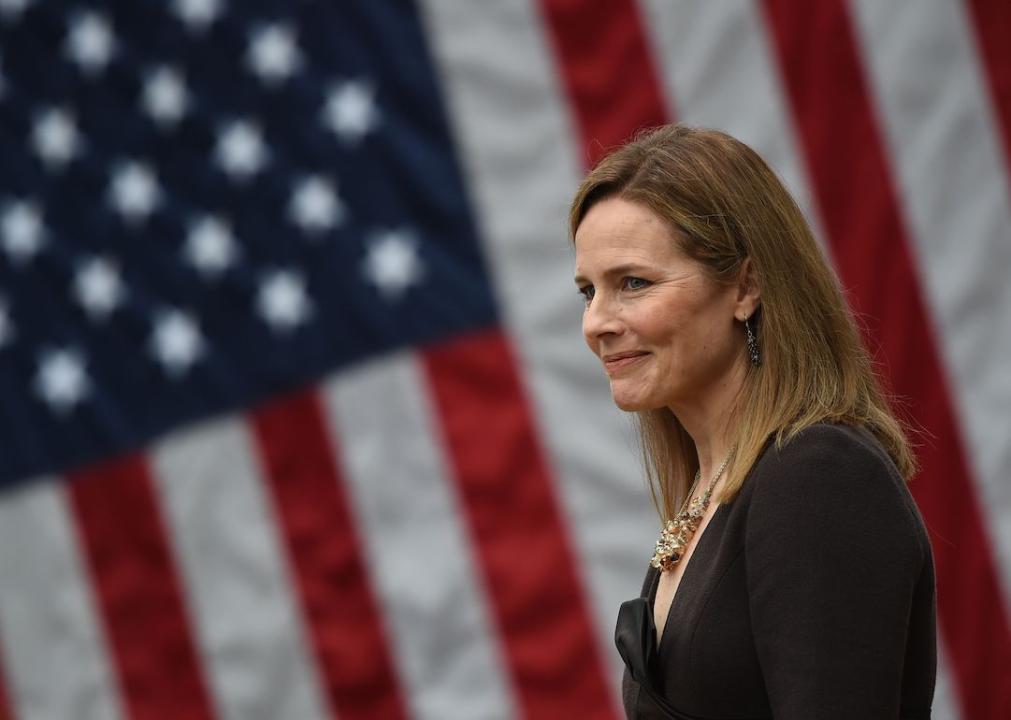
OLIVIER DOULIERY // AFP via Getty Images
Amy Coney Barrett: Education
Amy Coney Barrett attended Rhodes College, a liberal arts school in Memphis, Tennessee, affiliated with the Presbyterian Church. She graduated in 1994 with a bachelor of arts in English; she also won the awards for “Most Outstanding English Major” and “Most Outstanding Senior Thesis.” Barrett went on to attend Notre Dame Law School. During her time there, she served as an executive editor of the Notre Dame Law Review. When she graduated in 1997, she was awarded the Hoynes Prize, which is given to the student with the “best record in scholarship, deportment, and achievement.”
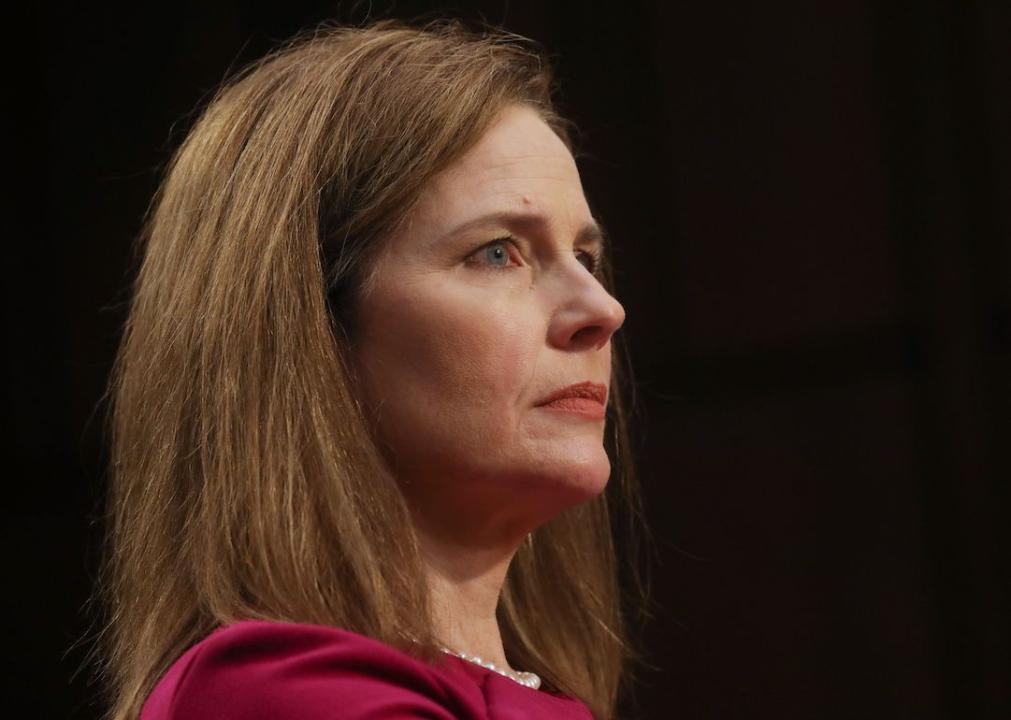
LEAH MILLIS/POOL // AFP via Getty Images
Amy Coney Barrett: Early career life
After graduating from Notre Dame, Barrett clerked for Judge Laurence H. Silberman of the U.S. Court of Appeals for the D.C. Circuit from 1997 to 1998, and then for Supreme Court Justice Antonin Scalia the following year. When that clerkship ended in 1999, Barrett went into private practice, joining the D.C. law firm Miller, Cassidy, Larroca & Lewin. In 2001, she joined George Washington University Law School as an adjunct professor, and then, in 2002, she returned to her alma mater Notre Dame where she was eventually named a Professor of Law in 2010.
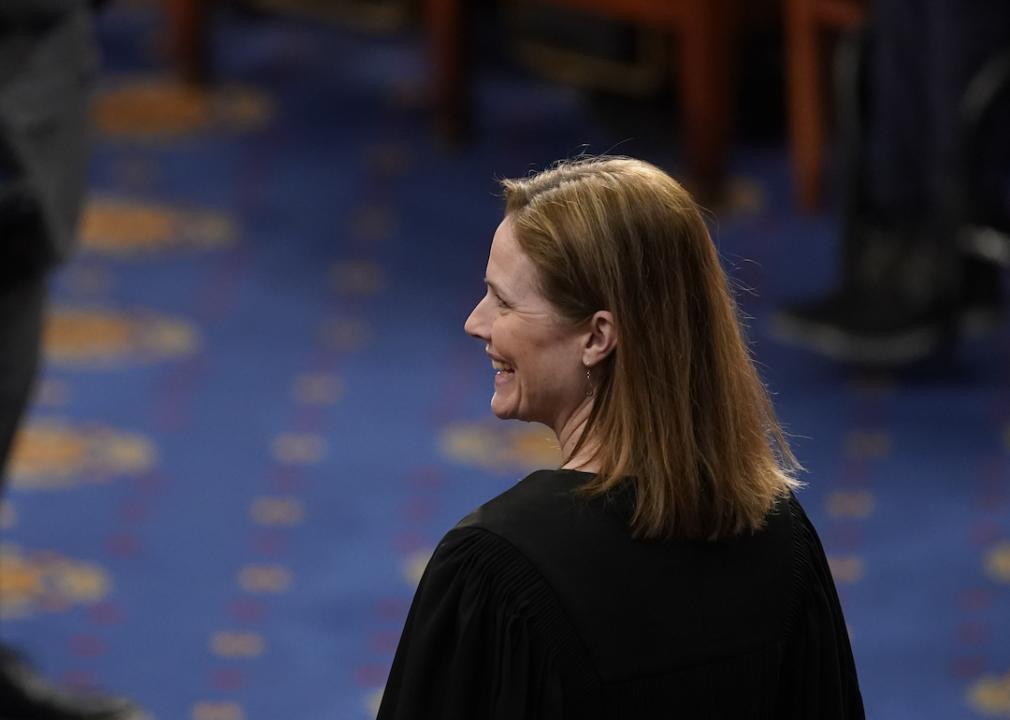
Al Drago-Pool // Getty Images
Amy Coney Barrett: Before the Supreme Court
In 2017, President Trump nominated Barrett to the U.S. Court of Appeals for the Seventh Circuit. During the hearings on her nomination, Barrett was questioned about a 1998 law review article that she co-wrote arguing that Catholic judges should recuse themselves from death penalty cases in some instances due to their moral opposition to capital punishment. Democratic senators’ skepticism surrounding Barrett’s ability to separate her faith from legal decisions came under fire from religious conservatives, while LGBTQ+ civil rights organization Lambda Legal cosigned a letter opposing Barrett’s nomination, also concerned she wouldn’t be able to separate her religion from rulings on LGBTQ+ issues. Ultimately, Barrett was confirmed by the Senate.
While on the Seventh Circuit, Barrett dissented after the majority upheld the district court’s preliminary injunction against the “public charge” rule, an effort by the Trump administration to raise the standard for obtaining green cards and immigrant visas. She also dissented when the court upheld the federal law preventing felons from owning firearms.
In September 2020, Trump nominated Barrett to the Supreme Court. While largely supported by Republicans, Democrats opposed Barrett’s nomination on the grounds that they’d be filling a seat on the bench while an election was underway in many U.S. states. The nomination was especially contested because, in 2016, the Senate Republican majority refused to consider President Barack Obama’s nomination of Merrick Garland more than 10 months before the end of Obama’s presidency. By comparison, when Trump nominated Barrett, only four months remained in his term. The confirmation hearings went on, however, and Barrett was confirmed as an associate justice of the SCOTUS on Oct. 27, 2020.
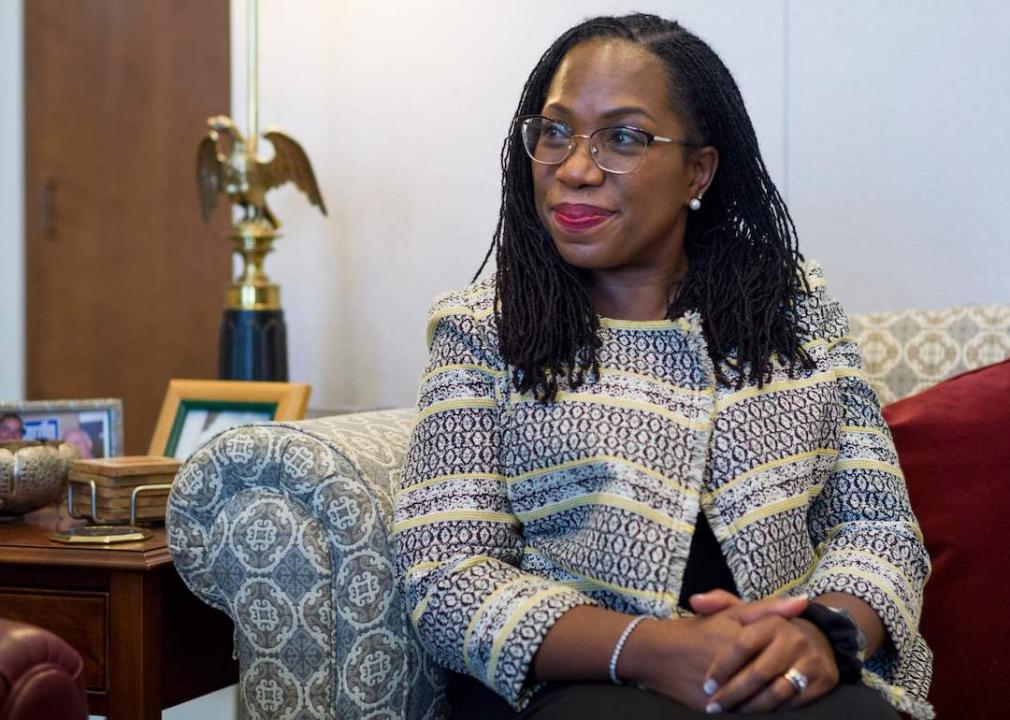
MANDEL NGAN // AFP via Getty Images
Ketanji Brown Jackson: Education
As a high school senior in Miami, Ketanji Brown Jackson’s guidance counselor reportedly told her to set her sights a bit lower when she expressed interest in applying to Harvard University. She rejected that advice, and was accepted into Harvard. There, Jackson studied government and the decorated high-school orator also pursued the arts. She was a member of the student improv group On Thin Ice and took drama classes, once working with fellow student Matt Damon as his scene partner. In 1992, Jackson graduated from Harvard with a bachelor of arts degree.
After a year-long stint as a reporter and researcher at Time, Jackson returned to Cambridge to attend Harvard Law School. She served as a supervising editor of the Harvard Law Review and graduated with her J.D. in 1996.
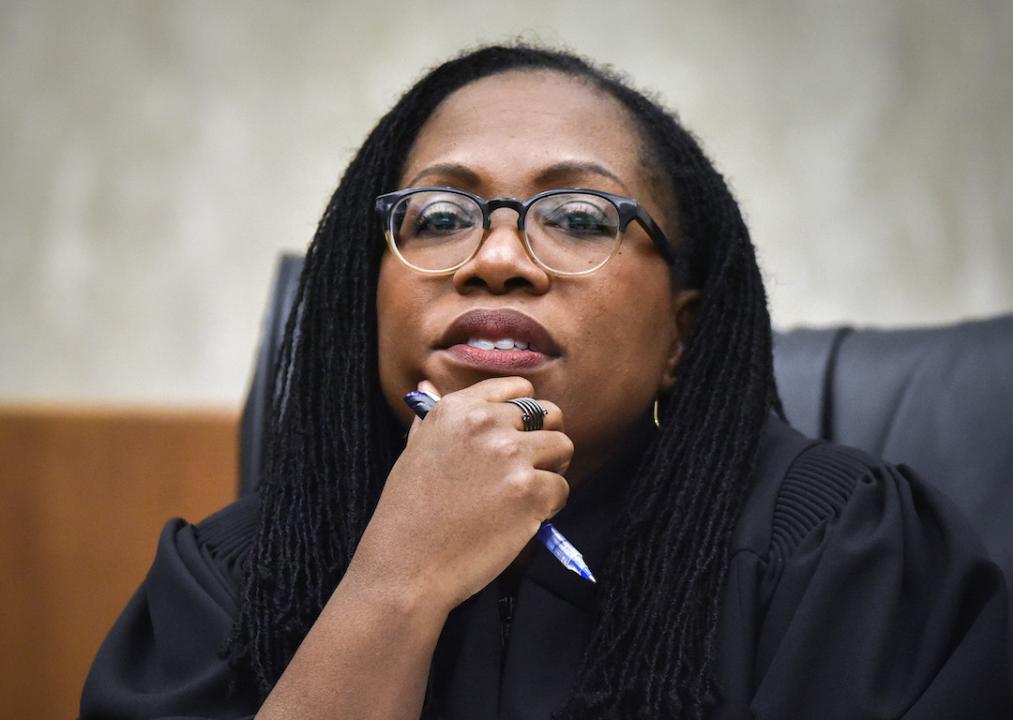
Bill O’Leary // The Washington Post via Getty Images
Ketanji Brown Jackson: Early career life
Fresh out of Harvard Law School, Jackson held three clerkships: one for the U.S. District Court for the District of Massachusetts, another for the U.S. Court of Appeals for the First Circuit, and then—after a year in private practice (at the same private law firm where Barrett worked)—for Supreme Court Justice Stephen Breyer, whose seat she is filling.
Jackson then returned to private practice from 2000 to 2003, working at Goodwin Procter in Boston and at what is now known as Feinberg Rozen in New York. In the two years that followed, she became an assistant special counsel to the U.S. Sentencing Commission, and then, from 2005 to 2007, a federal public defender in Washington D.C., handling cases before the U.S. Court of Appeals for the D.C. Circuit. From 2007 to 2010, Jackson worked as an appellate specialist at Morrison & Foerster in Washington D.C.
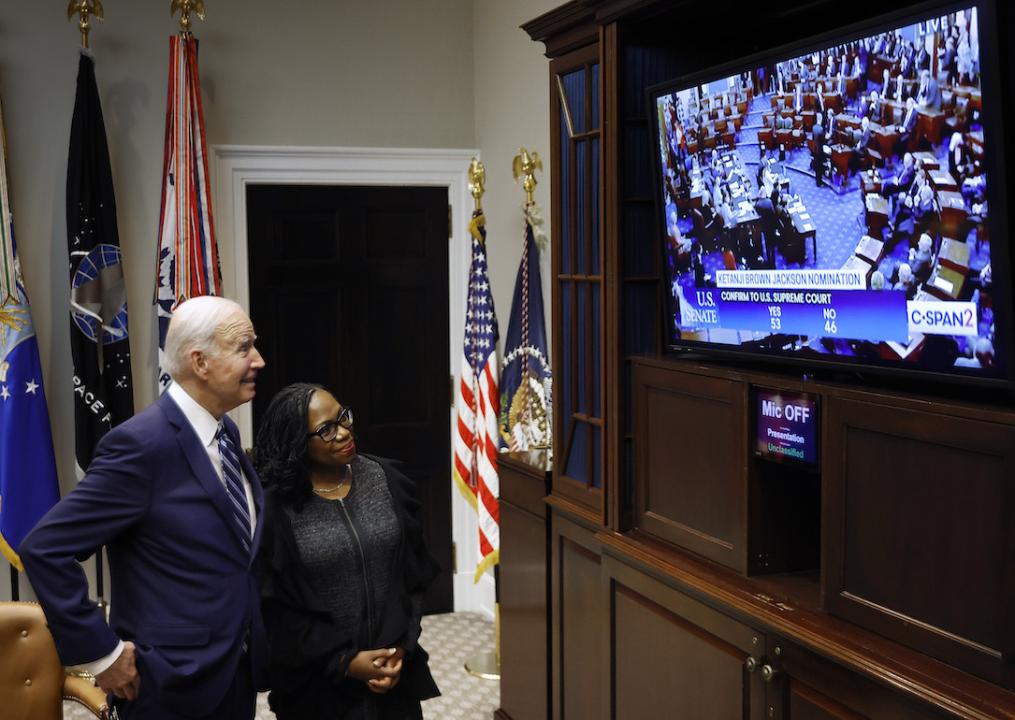
Chip Somodevilla // Getty Images
Ketanji Brown Jackson: Before the Supreme Court
Jackson left Morrison & Foerster in 2010 to become vice-chair of the U.S. Sentencing Commission, nominated by Obama in 2009. During her time in the position, which she held until 2014, she reduced sentences for drug-related offenses. In 2012, Obama nominated Jackson to serve as a judge for the U.S. District Court for the District of Columbia; she was confirmed in 2013. In one of her most high-profile cases, Jackson ruled against the Trump administration’s challenge to subpoena former White House counsel Don McGahn to testify in the impeachment inquiry against the president. One portion of Jackson’s opinion made headlines: “Stated simply, the primary takeaway from the past 250 years of recorded American history is that Presidents are not kings,” she wrote. “This means that they do not have subjects, bound by loyalty or blood, whose destiny they are entitled to control.”
Jackson moved one step closer to the SCOTUS in 2021 when President Joe Biden nominated her to serve on the U.S. Court of Appeals for the D.C. Circuit. Less than a year later, Biden announced that Jackson was his nominee for associate justice of the Supreme Court. After contentious hearings, Jackson was confirmed by the Senate on April 7, 2022. She is the first Black woman to serve on the Supreme Court as well as the high court’s first former public defender.
